When you step out into your garden to pick ripe tomatoes straight from the vine, the last thing you want to see is insect damage on your fruit. But unfortunately, tomatoes aren’t just tasty to humans, and many garden pests love them too. In backyard gardens, it’s not uncommon to find tomato plants with holey fruit or leaves that have been skeletonized overnight!

In this guide, we’ll introduce you to some of the most common tomato pests that you should be aware of. Although some of these “pests” are usually welcome visitors in the garden, they can cause a lot of damage to tomatoes, which is why you may want to exclude them from your vegetable beds. Below, you’ll learn how to decide what pests are targeting your tomato plants and what to do about it.
Jump to:
- 15 common tomato pests and how to control them
- 1. Tomato hornworms
- 2. Aphids
- 3. Tomato fruit worms
- 4. Whitefly
- 5. Slugs and snails
- 6. Birds
- 7. Flea beetles
- 8. Colorado potato beetles
- 9. Borers
- 10. Leaf-footed bugs
- 11. Blister beetle
- 12. Cutworms
- 13. Rodents
- 14. Thrips
- 15. Nematodes
- Frequently asked questions
- Summary
15 common tomato pests and how to control them
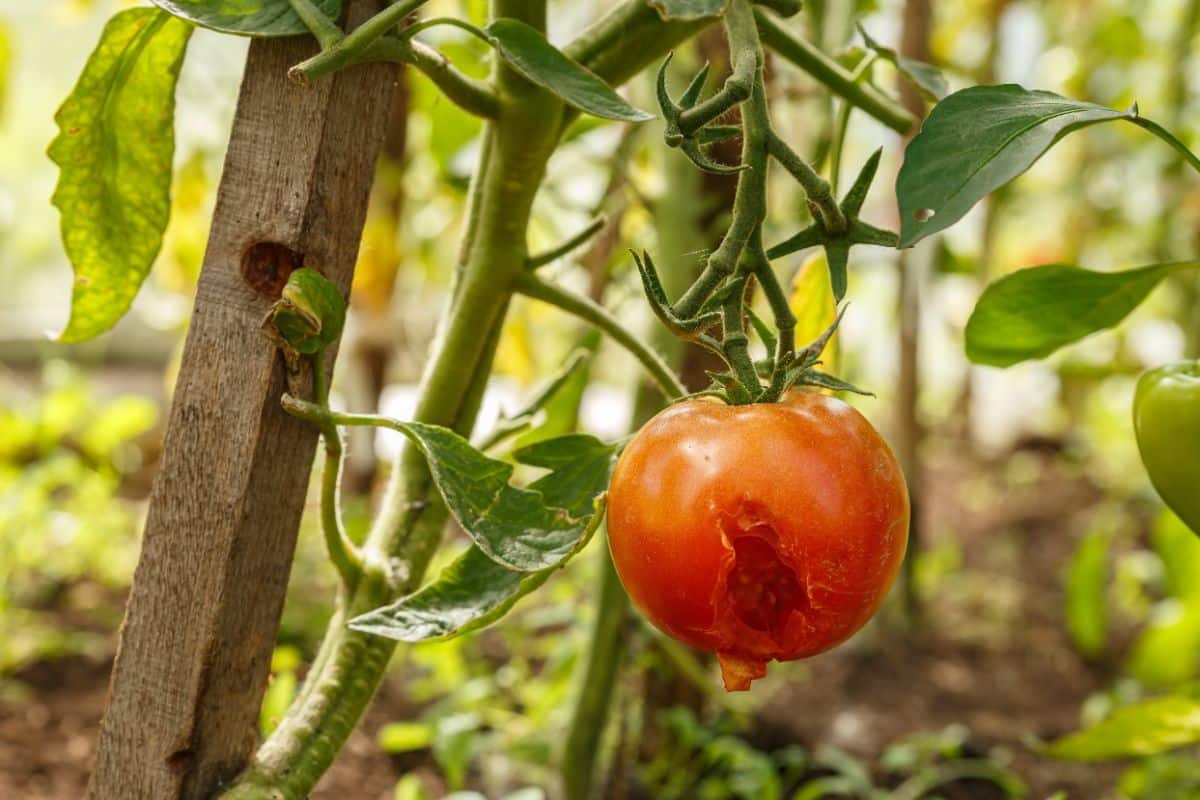
When tomato pests attack, you’ll want to act quickly to mitigate damage and make sure the pests don’t spread. Luckily, there are lots of organic and natural ways to control tomato pests without resorting to chemical pesticides.
1. Tomato hornworms
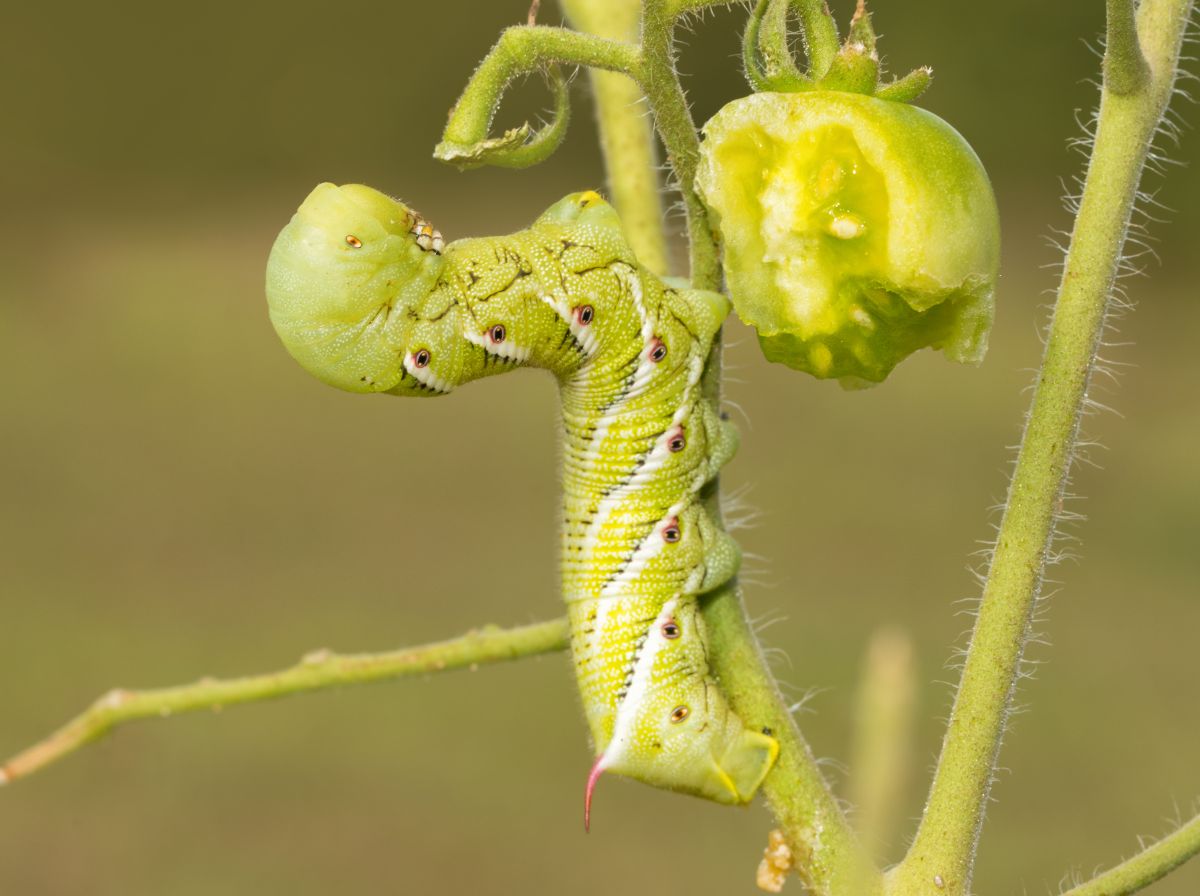
Probably the most notorious tomato pest of all, tomato hornworms are the caterpillars of five-spotted hawk moths. These caterpillars are a bright green color with angled white stripes on their sides and a distinct horn on their rear. When they invade tomato patches, these voracious eaters can skeletonize tomato leaves and riddle fruit with holes too.
When they’re small, tomato hornworms can be difficult to see, but they grow quite large and usually reach about the size of your thumb. If you can’t spot hornworms but still suspect they’re terrorizing your plants, try using a blacklight at night, which makes these caterpillars glow in the dark. You can also inspect your plants for their black droppings that often accumulate on plant leaves.
Tomato hornworms are certainly a destructive tomato pest, but their large size makes them relatively easy to control. Handpicking these insects into a bucket of soapy water is usually the best way to manage them. For larger infestations, BT thuricide is an organic spray that can help, but avoid using it on plants in flower as it can affect non-pest caterpillars too.
2. Aphids
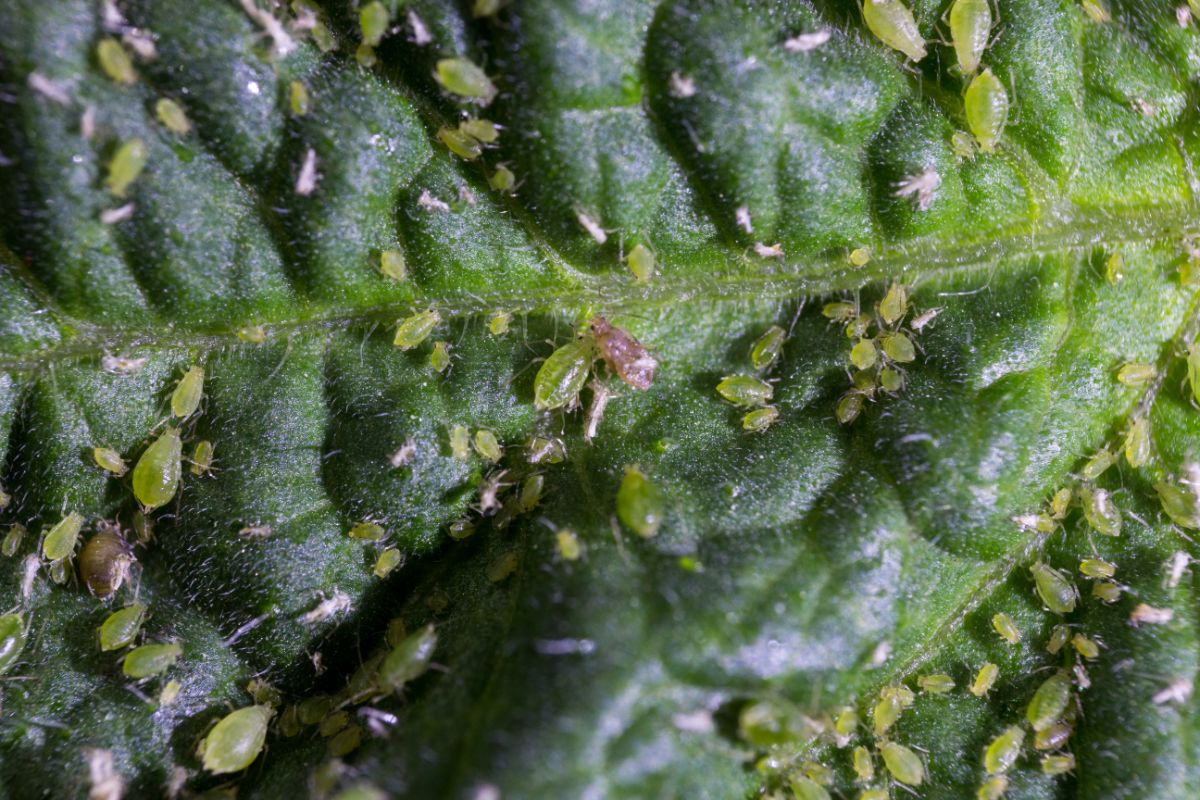
Aphids are tiny, sap-sucking insects that affect many plants, including fruit, flowers, vegetables, and tomatoes too. While a single aphid isn’t much cause for worry, if you notice a lot of aphids congregating on your tomato plants, you’ll want to act fast. These insects can cause stippling on plant leaves as they feed, but when infestations progress, they can cause tomato leaves to turn yellow and wilt, and they also stunt the growth of tomato plants and reduce their harvest yields.
Aphids come in many different colors, including yellow, brown, red, and green, and some aphids have wings. One key way to differentiate aphids from other insects is by their cornicles, which are two spiky protuberances that appear on their backsides. Clusters of ants on your plants may also indicate you have an aphid infestation, as ants feed on these pesky pests!
While aphids are a nuisance, they are easier to control than many other garden pests. Sometimes you can dislodge aphids with a strong blast from your garden hose, or you can treat your plants with an organic insecticidal soap spray. Alternatively, if you want to rid your tomatoes of aphids once and for all, plant companion plants to attract beneficial insects like lacewings and ladybugs.
3. Tomato fruit worms

Also known as corn earworms, tomato fruit worms are another troublesome tomato pest that can damage your harvest. These insects burrow into tomatoes when they’re young and devour the fruit from the inside out. Because they hide in tomatoes, it can be difficult to spot tomato fruit worms until the damage is already done and tomatoes begin to rot on their vines prematurely.
Sometimes you can spot tomato fruit worms via their white eggs that are laid on plant leaves. You may also see the brown, adult fruit worm moths flying around your tomatoes. Covering your tomato plants with floating row covers can keep fruit worm moths from landing, but if you go this route, you may want to hand-pollinate your plants to keep harvest yields high.
Like hornworms, tomato fruit worms can be managed with BT thuricide spray, which is made from a naturally occurring, soil-dwelling bacteria and is approved for organic garden use. You can also grow companion plants, like dill, near your tomatoes to attract predatory wasps that will feed on fruit worms. Also, avoid growing corn near your tomatoes, as fruit worms can spread to your tomatoes from corn plants.
4. Whitefly
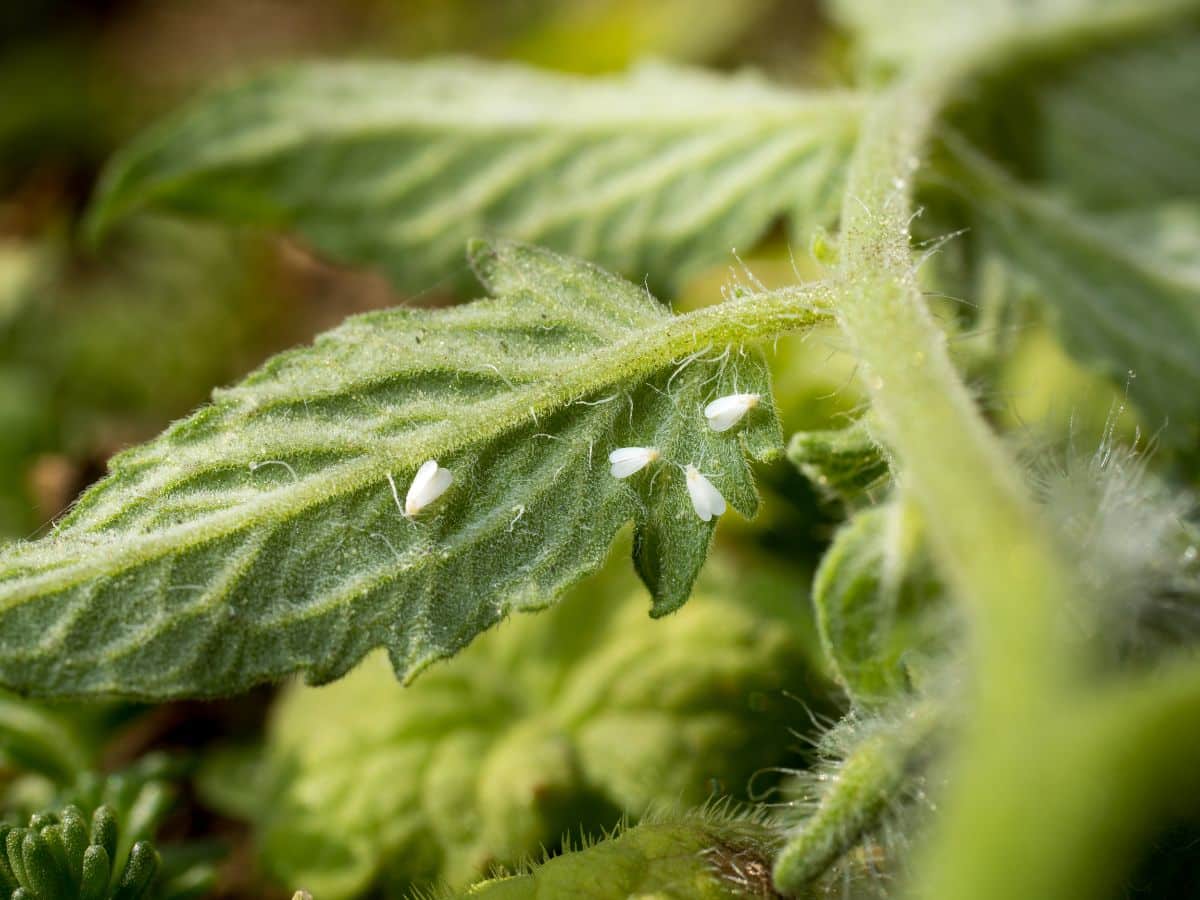
Whiteflies act quite similarly to aphids in the garden, and they gather on tomato plants to feed on their sap. As infestations progress, whiteflies can cause tomato leaves to discolor, wither, and drop. Bad infestations can also impair the growth of tomato plants and diminish their fruit yields, and these garden pests can also transmit plant viruses between your tomatoes.
Whiteflies are tiny, winged insects that might be hard to spot, except for their white coloration. Against dark tomato leaves, whiteflies stand out, and they often fly when disturbed, making them even easier to see.
As with aphids, whitefly nymphs and eggs can be dislodged from plants with a strong blast from your garden hose. These pests can also be treated with insecticidal soap sprays, or you can control them by releasing ladybugs or lacewings into your garden. Companion planting tomatoes with strongly scented herbs, like basil and dill, may also keep whiteflies from invading.
5. Slugs and snails
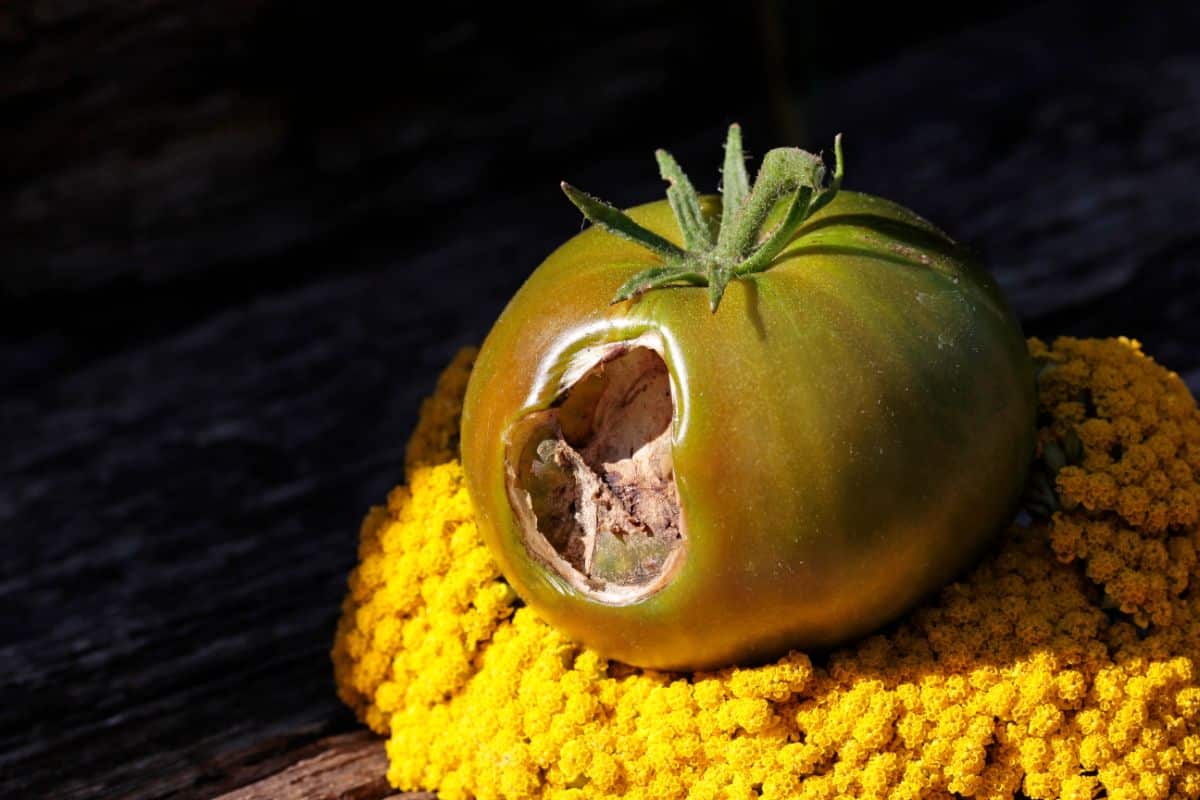
Slugs and snails can spell trouble for lots of plants in the garden, including tomatoes. When these hungry pests attack, they can bore deep pits in tomatoes, and they can also leave ragged holes in tomato stems and leaves. One or two slugs or snails aren’t usually a problem, but larger infestations can do a lot of damage, particularly to young tomato plants.
Slug and snail damage can be difficult to distinguish from that of birds and rodents, although slugs and snails usually make smooth (rather than jagged) holes in tomatoes. These pests also often come out after the rain, and they can leave behind silvery trails of slime everywhere they go.
Slugs and snails can be controlled by handpicking, or you can try out slug “pubs” near your tomatoes by filling a cup or jar with beer or orange juice and partially burying it in the soil near your plants. Aromatic plants and flowers like marigolds can also keep these pests away from your tomatoes.
6. Birds
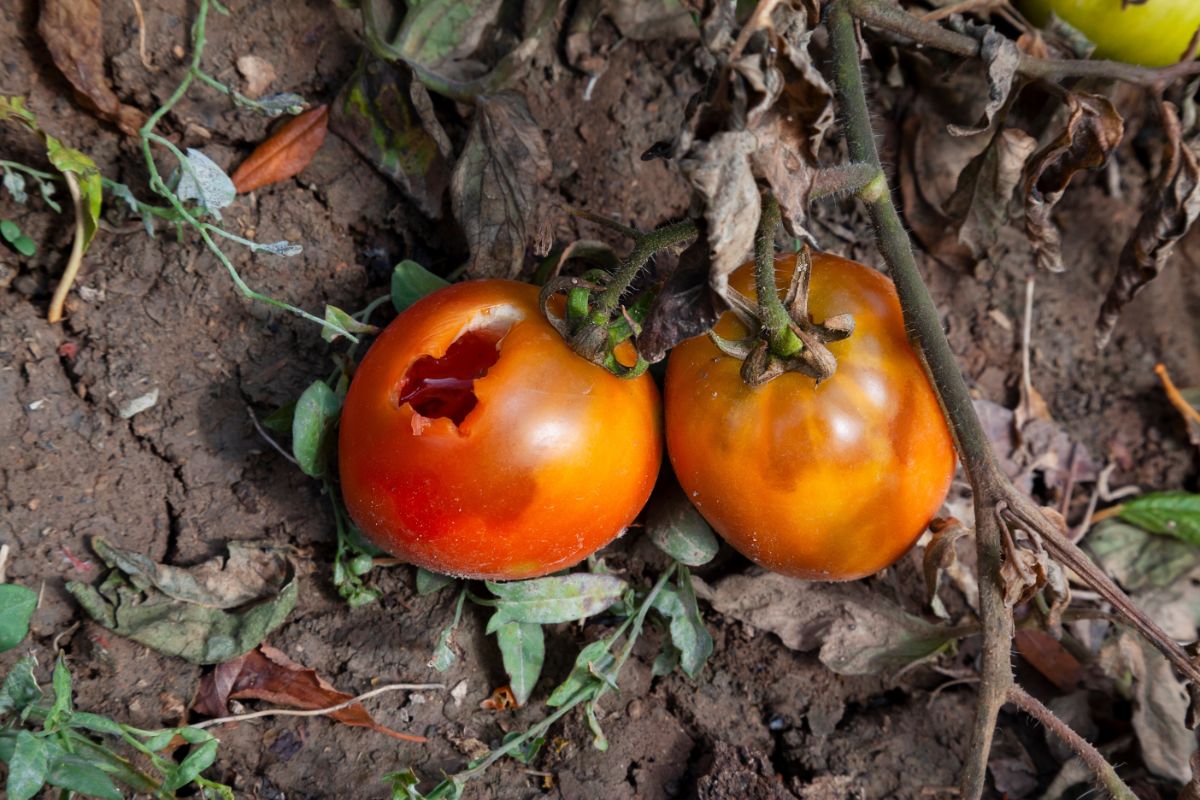
Birds are usually a benefit to gardens, and they can do a lot to manage garden pests, like slugs and tomato hornworms. However, when tomatoes begin to ripen, the bright fruit can make an alluring snack for birds that’s difficult for them to resist. You may see birds in the act of eating your tomatoes, or you may just find the tell-tale signs of their visits: tomatoes riddled with jagged holes that were made by pointy beaks!
One of the main reasons why birds target tomatoes is that they’re searching for water in the heat of summer. But if you keep a bird bath in your garden, birds will be much less likely to gobble up your tomatoes. Another good way to keep birds off your plants is to cover developing fruit with fruit protection bags.*
* Note: Whenever possible, avoid using bird netting in gardens as it can snag birds and other wildlife and cause injury or death. Floating row covers are a safer alternative, and they won’t inhibit pollinators if you remove them briefly during the day, or you can hand pollinate your plants if needed.
7. Flea beetles
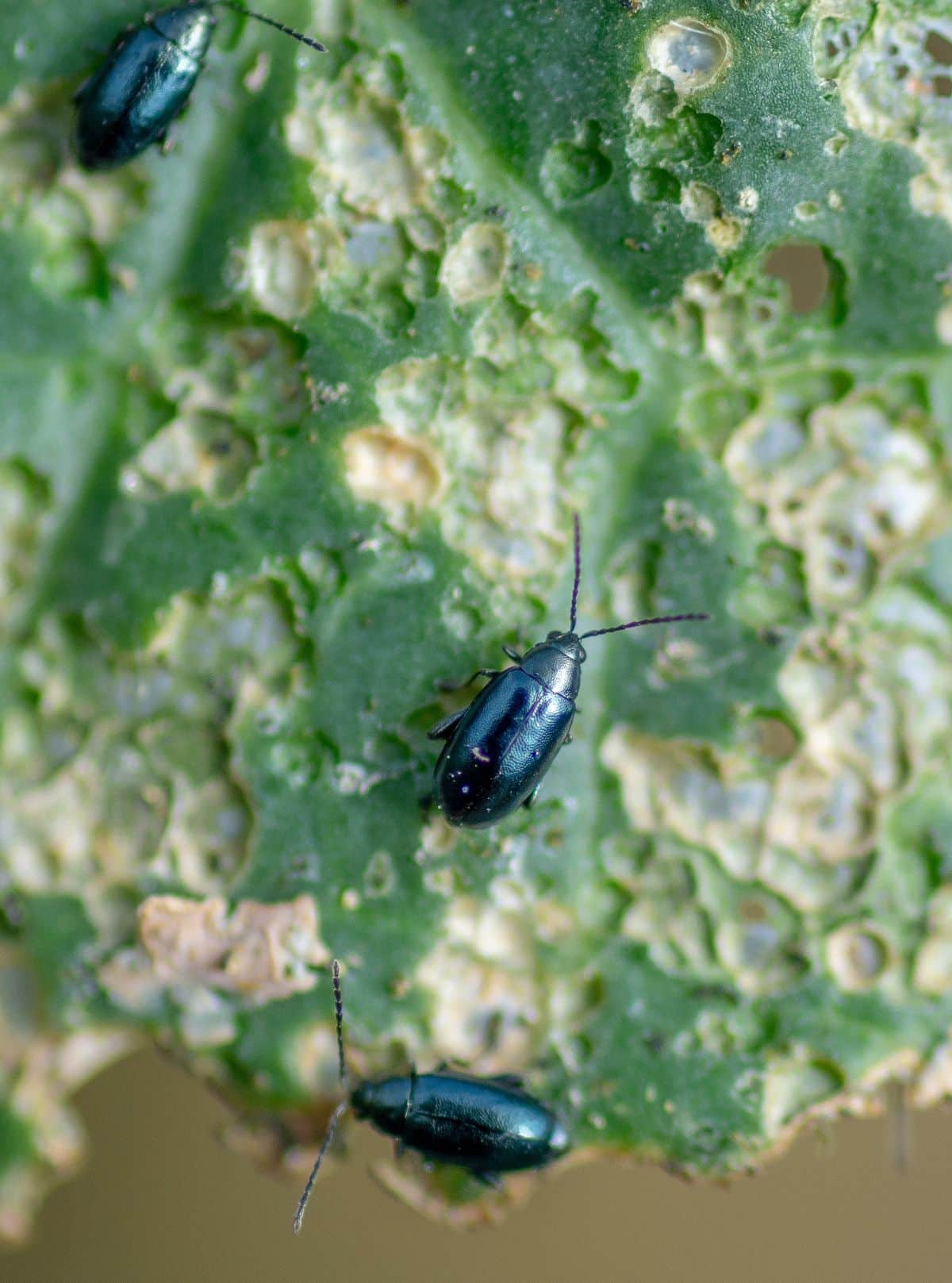
Flea beetles can cause issues with beans, radishes, spinach, and other vegetables, but they can also crop up in tomato plants. When they invade, flea beetles can riddle your tomato leaves with characteristic “shot holes,” but even worse, they can spread bacterial and viral diseases from plant to plant.
Flea beetles can be difficult to see because they are so small. These insects have black bodies, and they are known to jump frantically away when disturbed, which helped to earn them their name.
Companion planting is one of the best ways to naturally control flea beetles. You can either plant trap crops, like radishes, near your tomatoes to draw flea beetles away, or you can grow aromatic herbs, like dill or chives, to repel them. Soap sprays and floating row covers are two other simple and organic ways to keep flea beetles in check.
8. Colorado potato beetles
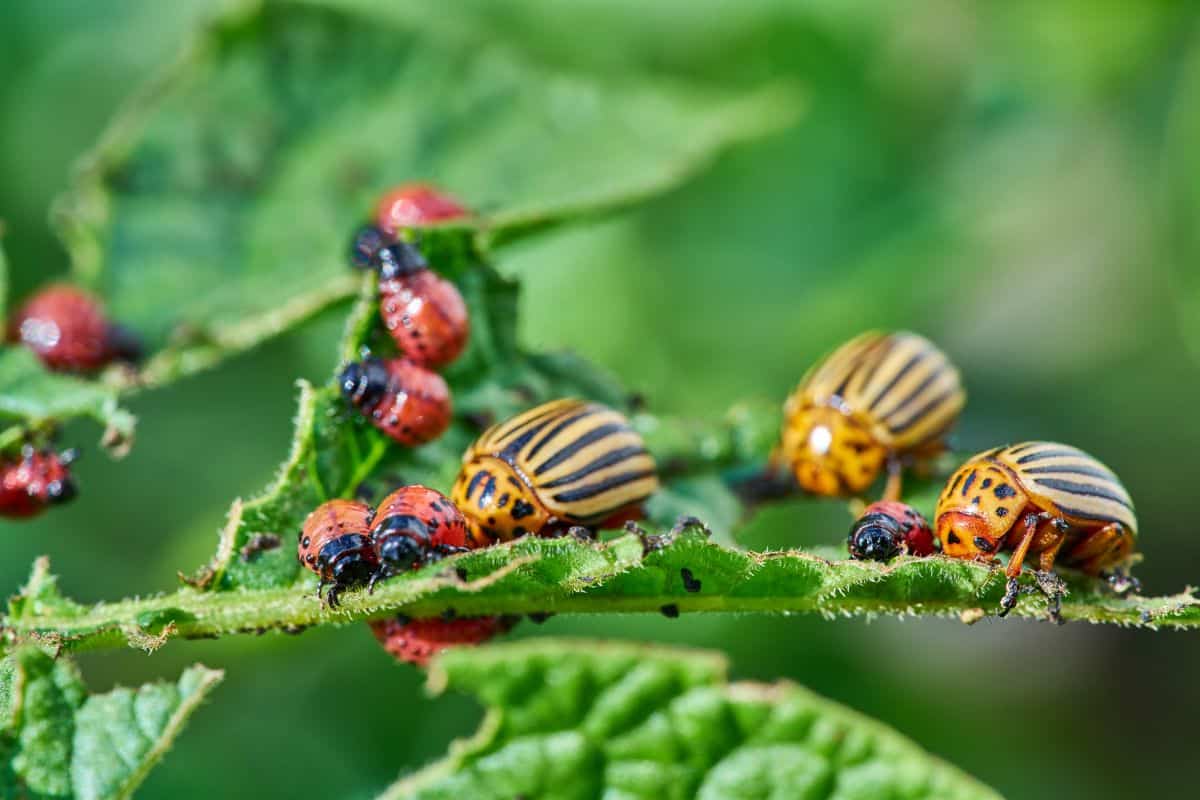
While these insects are called “potato beetles,” they can target any member of the nightshade family, including tomatoes. At about ¼ to ½” long, Colorado potato beetles are larger and easier to see than many other pests. Their brightly colored, brown, and white striped carapaces also make them stand out in garden beds.
When Colorado potato beetles attack, they can skeletonize plant leaves and severely impact the growth and yield of plants. These bugs also lay lots of bright orange eggs on plant leaves, which later emerge into dark orange grubs.
One way to keep Colorado potato beetles from targeting your tomatoes is to separate your tomatoes from other nightshade crops in your garden and to rotate nightshade plants on a 3 to 5-year cycle. Growing trap crops or installing floating row covers at the beginning of the season can also keep these pests in line, and handpicking can help you manage existing populations. Studies have also found that using straw mulch around plants can reduce beetle populations as it provides a safe haven for predatory insects that feed on beetles.
9. Borers
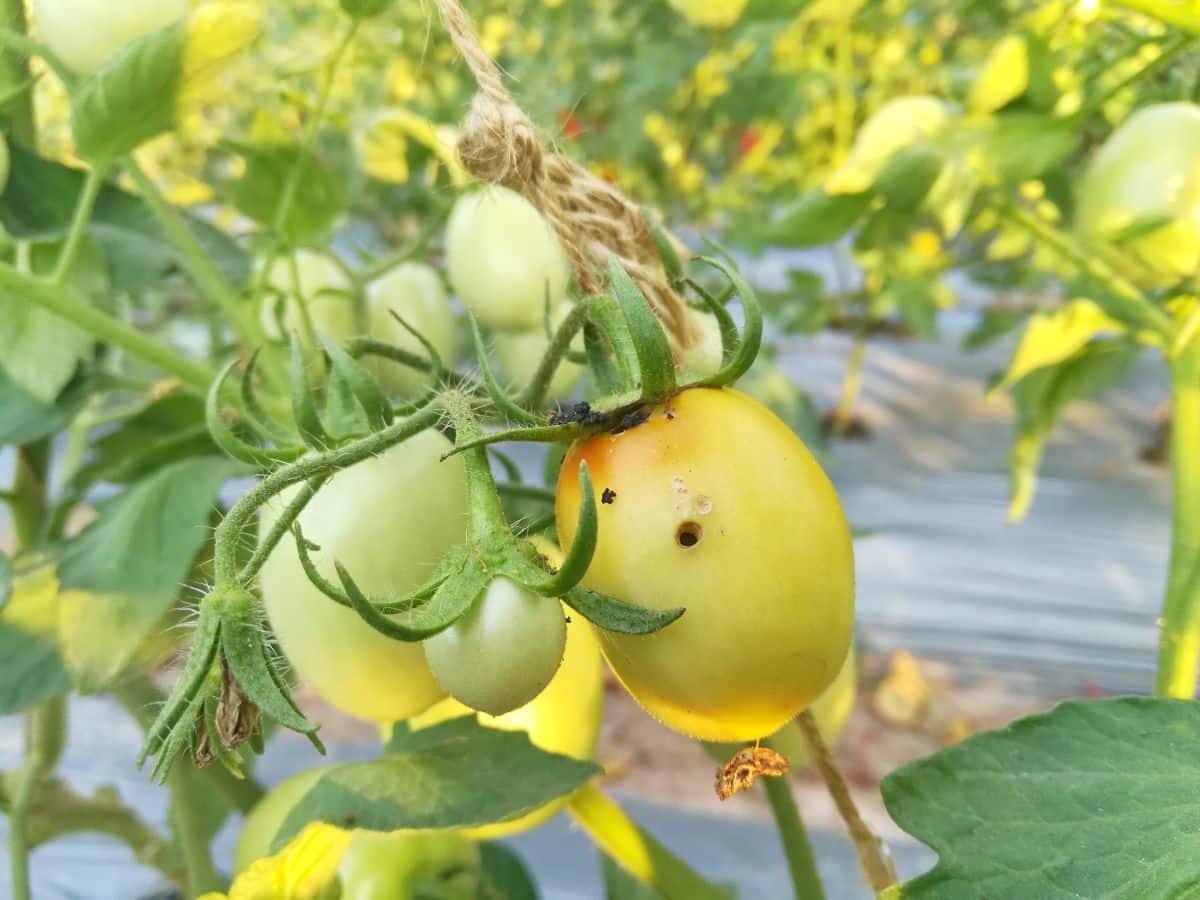
Gardeners are usually pretty familiar with squash vine borers, but there are other borer insects that can find their way into gardens, and some borers do target tomato plants. Borers are the caterpillars of certain moths, and they can range in color and size.
Like fruit worms, borers can be difficult to see since they spend most of their lives hiding inside tomatoes and tomato stems. Often, the way to tell if your tomatoes are suffering from borers is that the plants may begin to wilt or show other signs of distress. Upon inspection, you may notice tiny holes in the plant leaves or fruit, which may contain a borer caterpillar or two.
Borers are controlled using the same methods you can employ on other pest caterpillars. Floating row covers, BT thuricide, or companion planting are all helpful tools to add to your pest control arsenal. And don’t forget to rotate your tomato crops every year!
10. Leaf-footed bugs
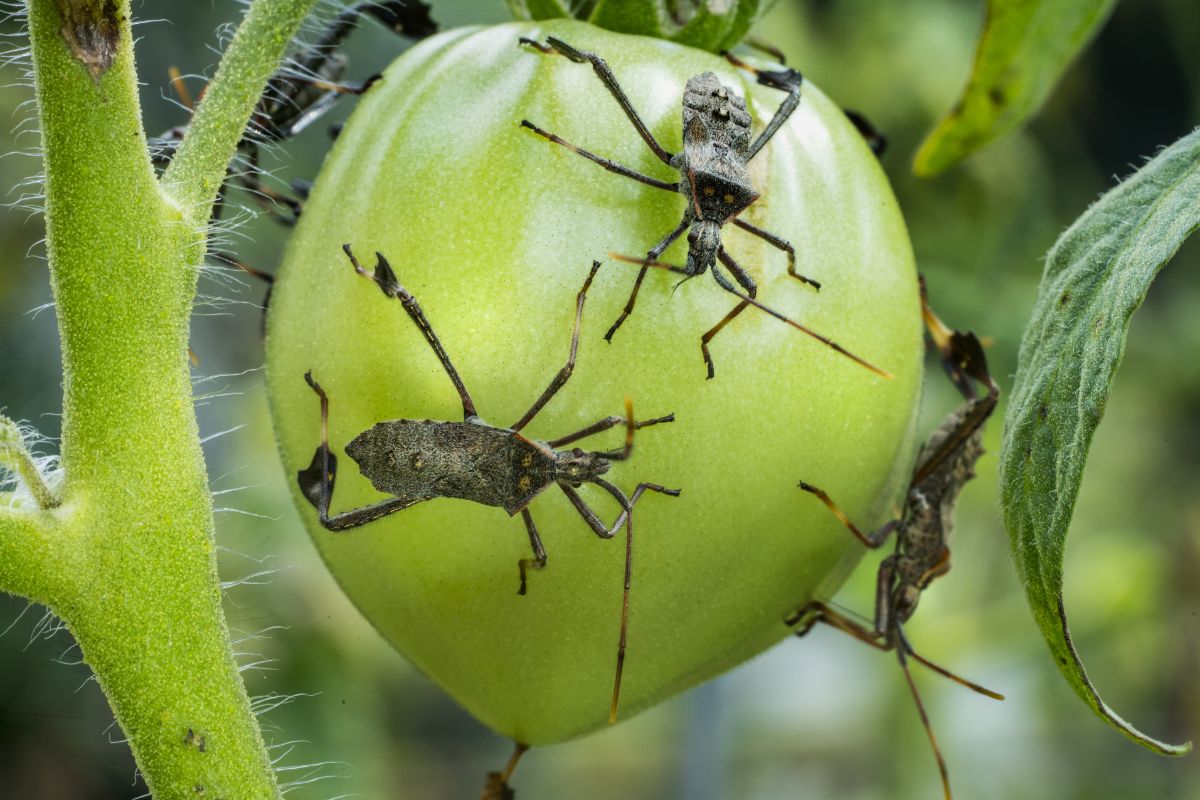
Leaf-footed bugs are related to stink bugs, and they are often confused with assassin bugs, which are actually beneficial insects. Unlike assassin bugs, however, leaf-footed bugs cluster in groups, while assassin bugs are solitary. Leaf-footed bugs are also easily recognized by the flattened shape of their hind legs.
Leaf-footed bugs can damage many different plants, including tomatoes, and they feed by inserting their mouth parts into plant tissue. This act causes stippling patterns on tomatoes and can make fruit much less attractive for market selling. These insects can also transmit a variety of plant diseases, so it’s important to limit their spread.
Floating row covers and handpicking can help manage leaf-footed insects, and soap sprays are also useful. For a longer-term solution, try out companion planting or grow sunflowers near your garden to lure these pests away from your tomato plants.
11. Blister beetle
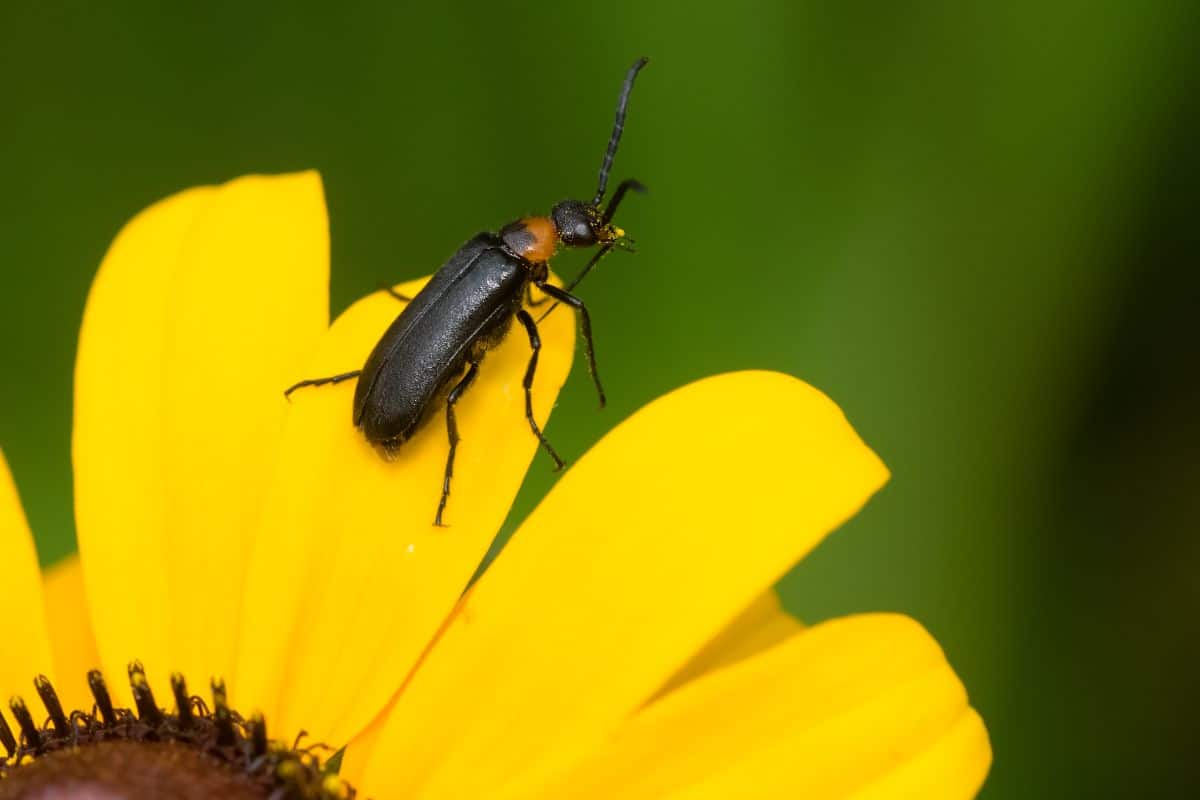
Blister beetles are another beetle variety that can crop up in tomato plants. There are several different blister beetles that may invade gardens, and they can have spotted striped or solid coloration. Unlike Colorado potato beetles, these insects have an elongated body, but they are usually large enough to spot on tomato plants.
Blister beetle larvae can actually be beneficial in gardens as they feed on grasshoppers. But when the larvae turn into beetles, it’s a different story. Blister beetle adults can strip tomato plants of their leaves, and they can also transmit plant diseases.
As their name suggests, blister beetles can secrete a chemical that causes the skin to blister, which is why you never want to touch them with your hands. Instead, control blister beetles with companion planting or remove them individually by knocking them into a bucket of soapy water with a stick.
12. Cutworms
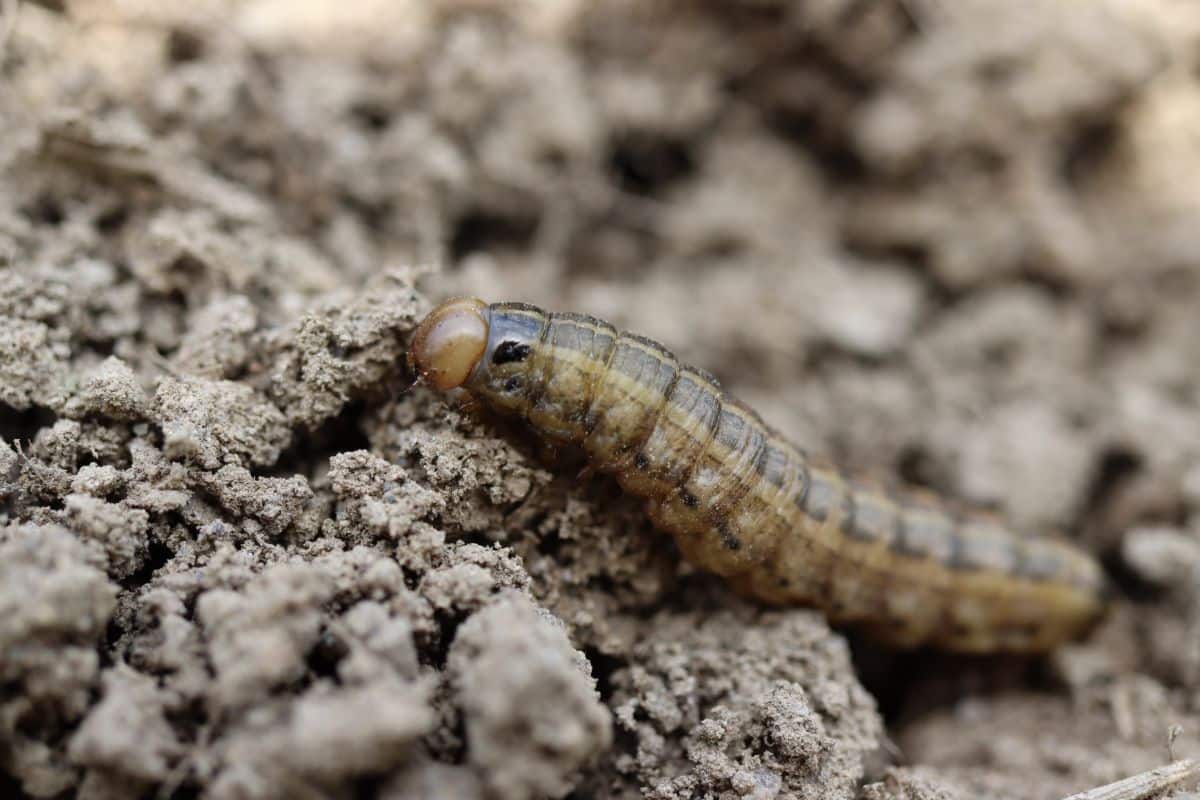
Cutworms are caterpillars that live in garden soil and devour plant stems. Cutworms usually cause the most problems for new seedlings and transplants, and they can spell disaster for new tomato plants and other vegetables too. If your newly planted tomatoes have toppled over and display severed stems, cutworms may be to blame.
Like other pest caterpillars, BT thuricide can control cutworm populations, or you can try out companion planting. Most often, gardeners use “collars” placed around plant stems to keep cutworms from devouring their new seedlings. Collars are very easy to make at home, and they can be crafted out of aluminum foil or paper towel tubes.
13. Rodents
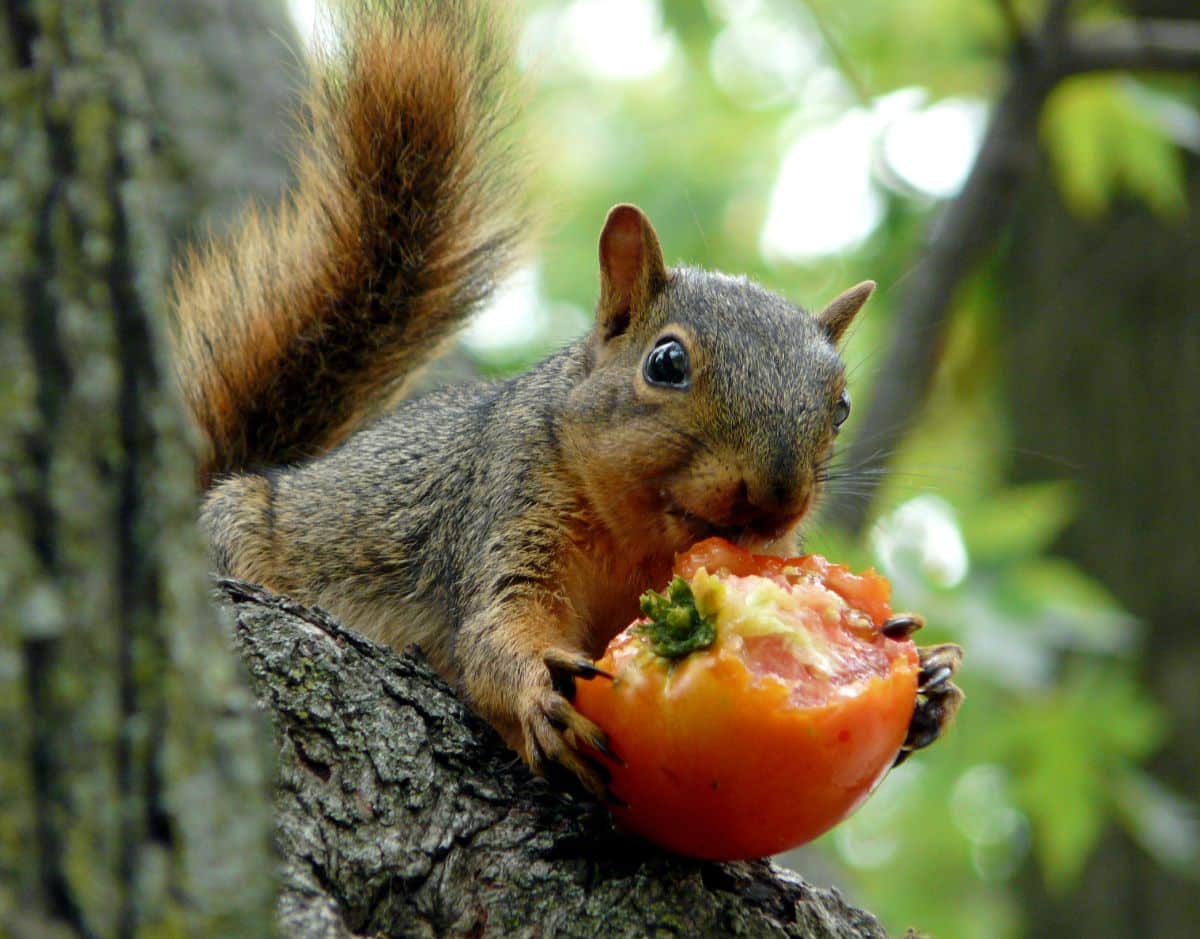
Rats, mice, and chipmunks may also sometimes nibble on tomato plants and leave behind ragged holes in the fruit, or your tomatoes may disappear entirely. It can sometimes be difficult to determine if tomato holes were caused by rodents or birds; however, bird damage usually occurs towards the top of tomato plants, and the holes birds leave behind are usually pointed from their beaks. Slug and snail damage can also look like rodent damage, but slugs and snails leave behind silvery slime trails, and the holes they bore often have smoother edges.
Keeping rodents out of your garden can be a challenge, but growing alliums, mints*, and other strongly scented herbs nearby may help. Metal cloches can protect smaller plants, but they are usually too small for tomatoes. However, you can line tomato cages with chicken wire to make your own DIY cloches!
*Note: Because it spreads so readily, consider growing mint in pots, so it won’t take over!
14. Thrips
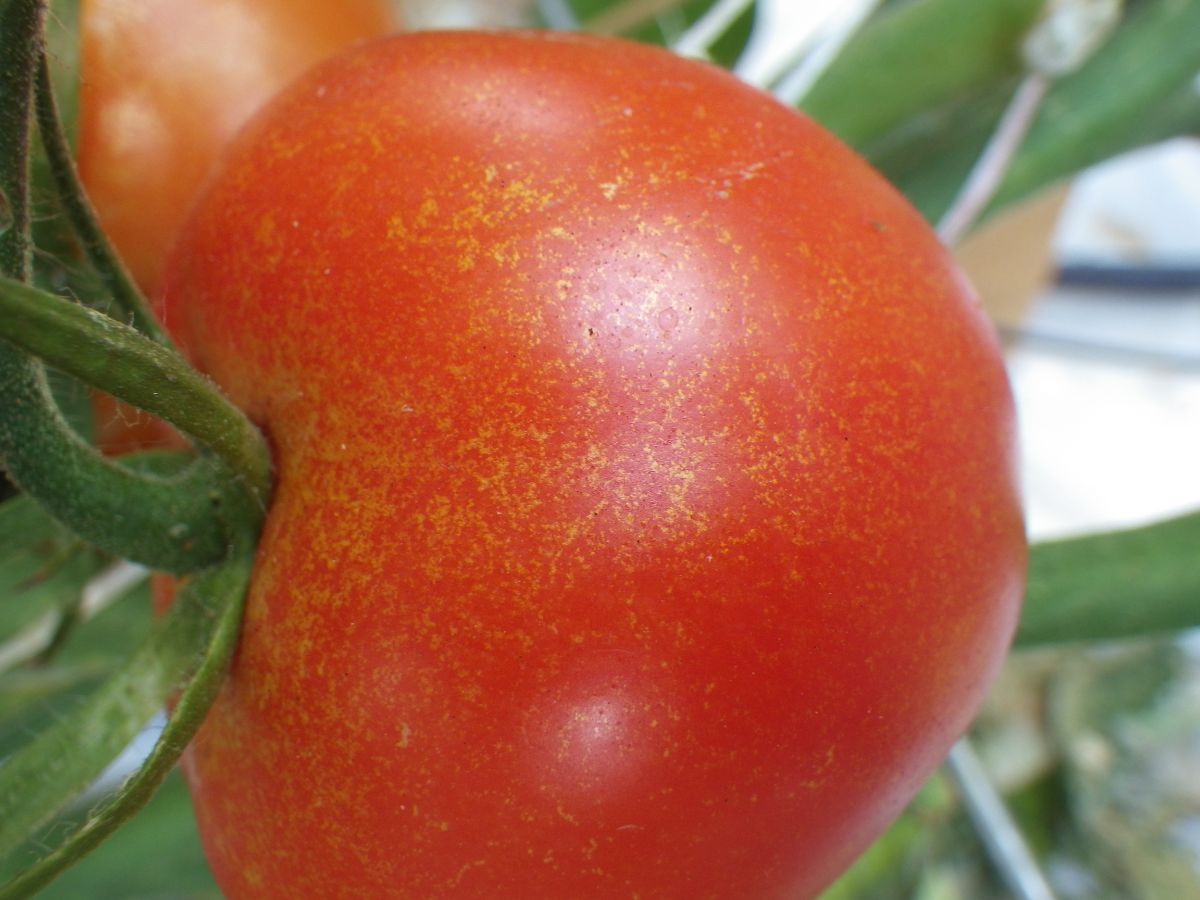
Thrips are similar to whiteflies, but they are a bit smaller, and they have narrower bodies. Like other sap-sucking insects, thrips can leave behind stippling patterns on tomatoes and leaves and weaken the plants over time, slowing growth and reducing tomato harvest sizes. Even worse, these pests can transmit different plant diseases, including wilt.
Thrips can be controlled using companion planting or floating row covers. For existing populations, try out soap sprays or use neem oil. Just keep in mind that even though neem oil and soap sprays are organic, they can kill non-target insects, so never spray them on plants in flower.
15. Nematodes
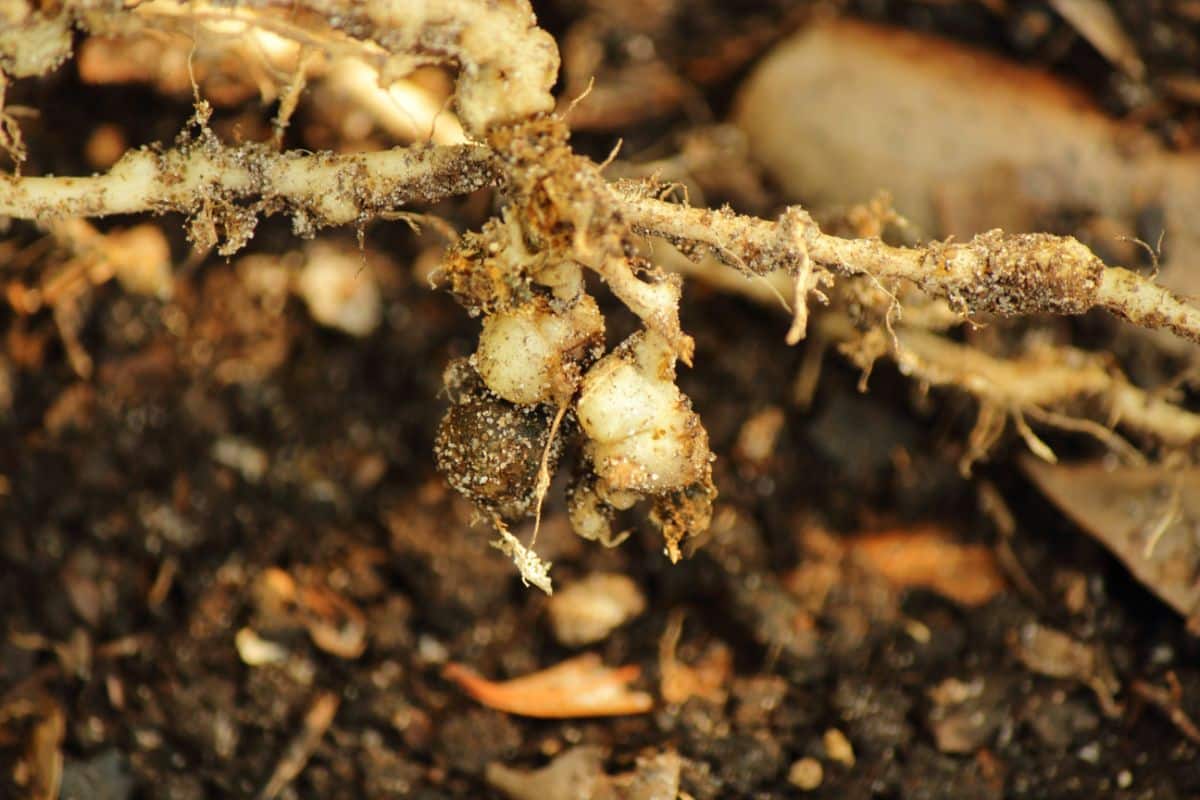
There are about 20,000 different types of nematodes, and not all of them are destructive. But the root-knot nematode is one of the most common nematode varieties that occur on tomato plants, and it won’t do your tomatoes any good.
When root-knot nematodes invade, they target your tomato’s root system and cause the roots to develop knobby galls and bumps. These growths impair your tomato’s ability to absorb nutrients and can cause plants to discolor, wilt or stop growing. If your tomato is in distress and you notice knobby roots when you dig it up, you’re dealing with nematodes.
Nematodes are invisible to the naked eye, so don’t expect to see them in your garden. But just because you can’t hand-pick them doesn’t mean you can’t control them!
Root-knot nematodes can be killed by soil polarization, and rotating your crops can also limit their impact. Some tomatoes also exhibit resistance to nematodes, and growing these cultivars can prevent nematodes from ever becoming a problem in your garden!
Frequently asked questions
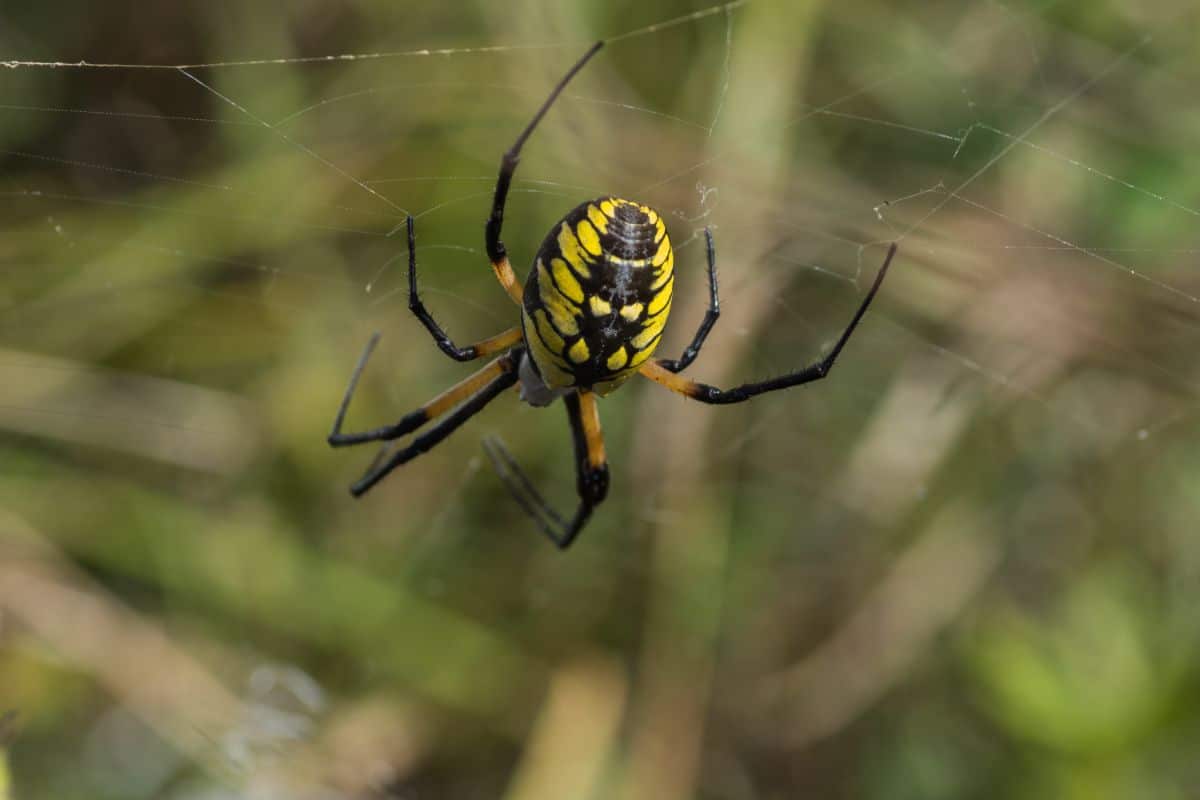
Companion planting tomatoes with aromatic herbs like basil or flowers like borage is one of the easiest and most effective ways to keep pests away from your plants. Floating covers and fruit protection bags are also useful. If birds are targeting your tomatoes, try installing a bird bath near your garden!
Some pests, like aphids, can be easily dispersed with a blast of water from your garden hose. Organic insecticidal soap or neem oil sprays are also effective ways to control many garden pests, but they should not be sprayed on plants in flower as they may harm non-target insects when applied improperly.
Tomato hornworms turn into hawkmoths, which are very efficient pollinators. For this reason, some gardeners choose to leave hornworms alone, or they may plant trap crops that they don’t mind hornworms feeding on. If you keep an organic garden, you can also handpick hornworms off your tomatoes and feed them to your backyard flock of chickens or pet bearded dragon.
Tomato plants are quite resilient, and they can usually bounce back after hornworms. As long as your plant still has a few leaves (or even sections of leaves) remaining, there’s a good chance it can recover.
While some bugs can be destructive to tomatoes, the majority of insects you’ll find in your garden are “neutral” and won’t do any harm to your plants. There are even some insects, like assassin bugs, that are beneficial and will feed on plant pests. If you see an insect in your garden, be sure to ID it first because it may be one of the “good guys!”
Dawn dish soap contains some harsh ingredients that are often too strong for plants. If you want to use a soap spray on tomatoes for insect control, look for Castile soap instead.
Summary
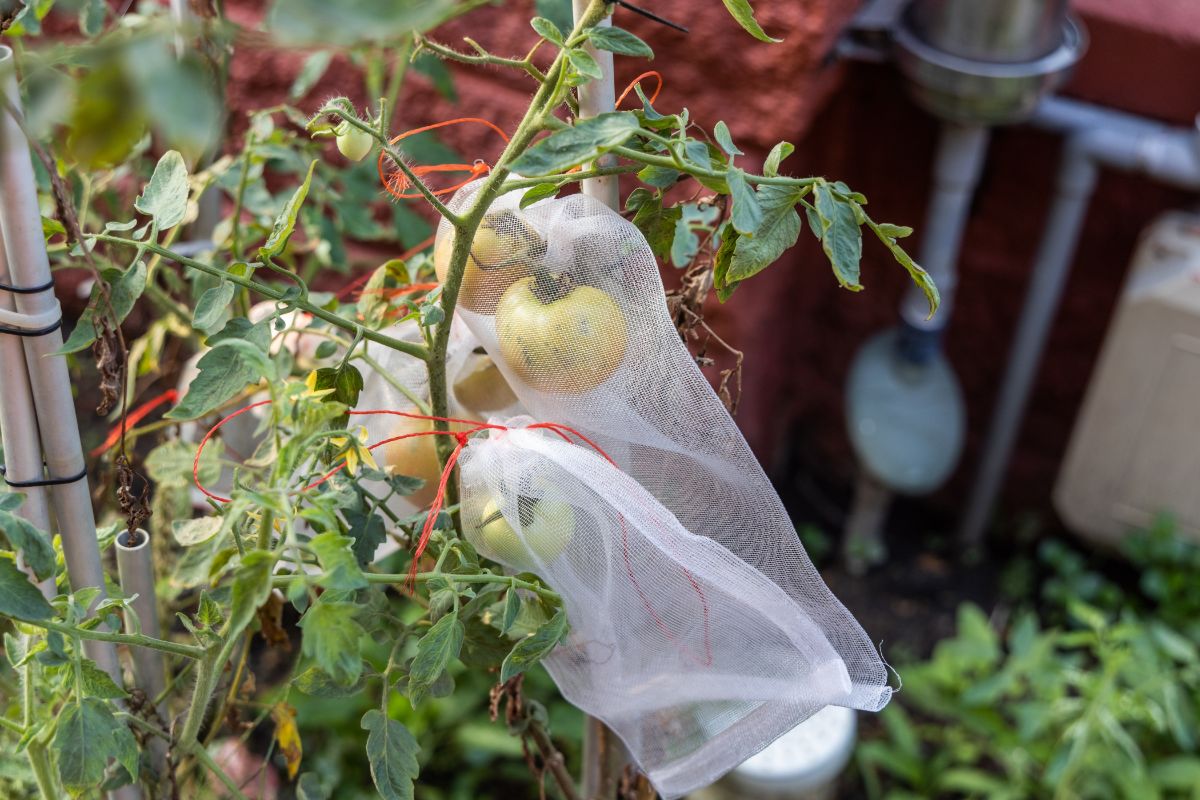
While tomato pests can be a bother, with the right tools on hand and a bit of gardening know-how, there’s no pest that’s too tough to handle. From companion planting to fruit protection bags, organic gardener has plenty of tools at their disposal to keep pests out of their garden and protect their tomato crop too.
One important thing to keep in mind is that not all bugs in the garden are bad. Beneficial insects, like spiders, predatory wasps, and lacewings, are some of the best little helpers for keeping your garden pest free. If you’d like to learn more about attracting beneficial insects to your garden, check out our how-to guide right here.

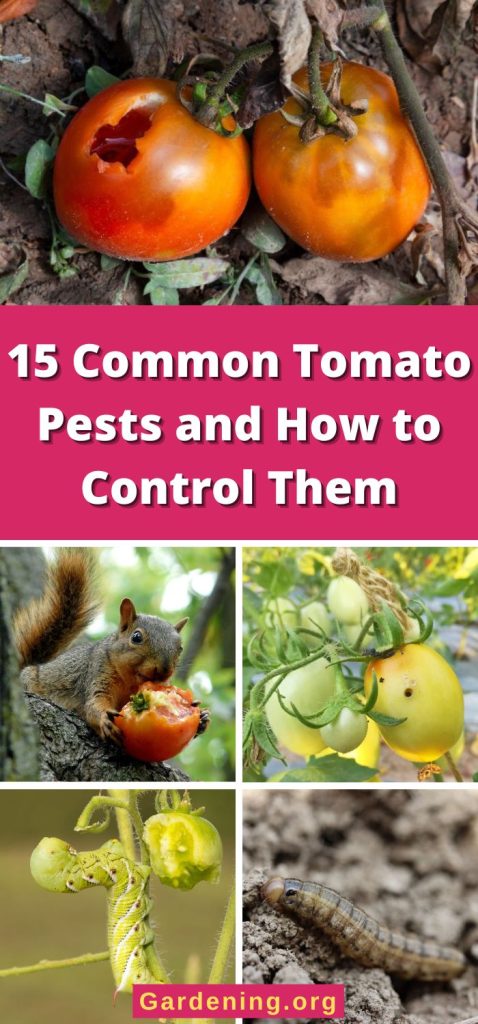
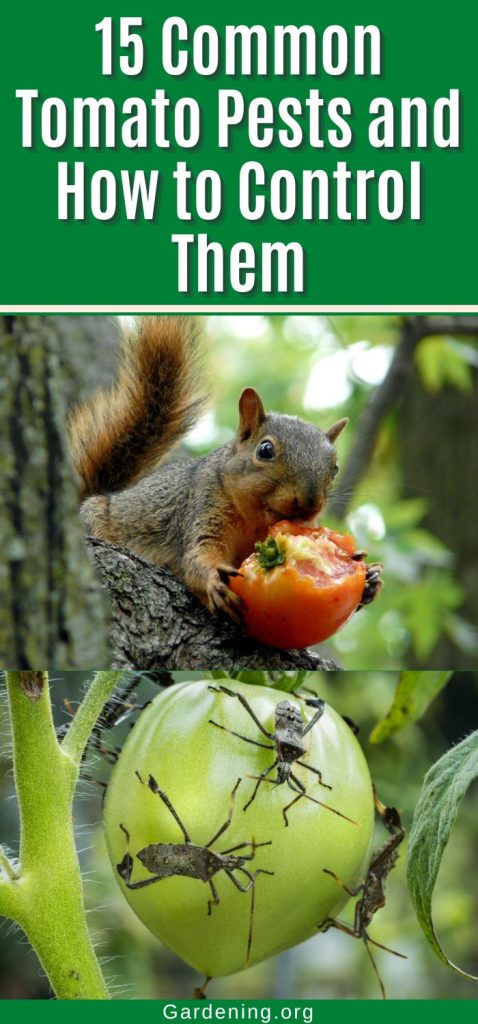
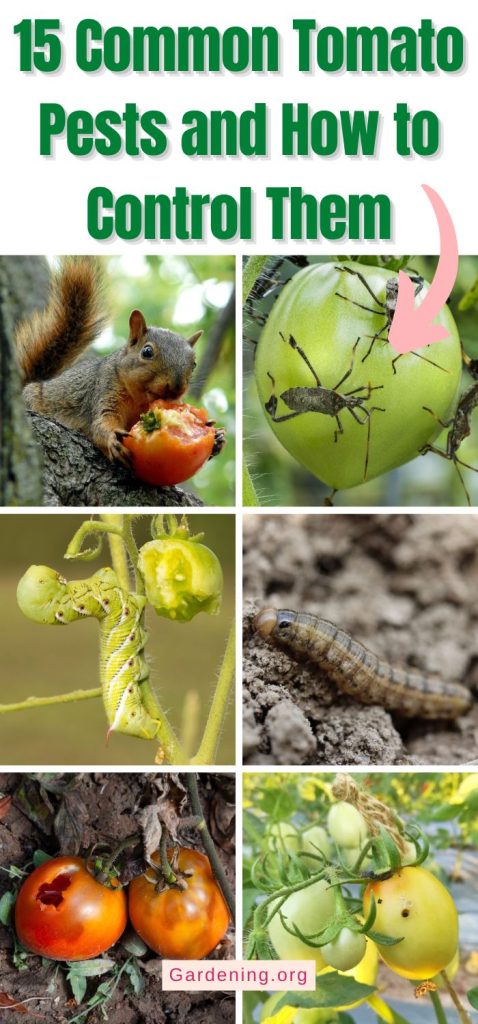
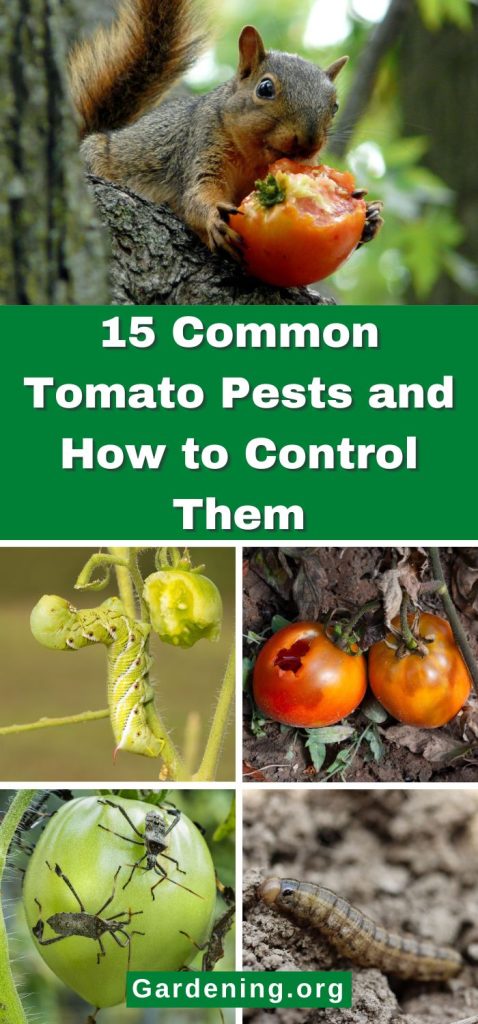




Leave a Reply